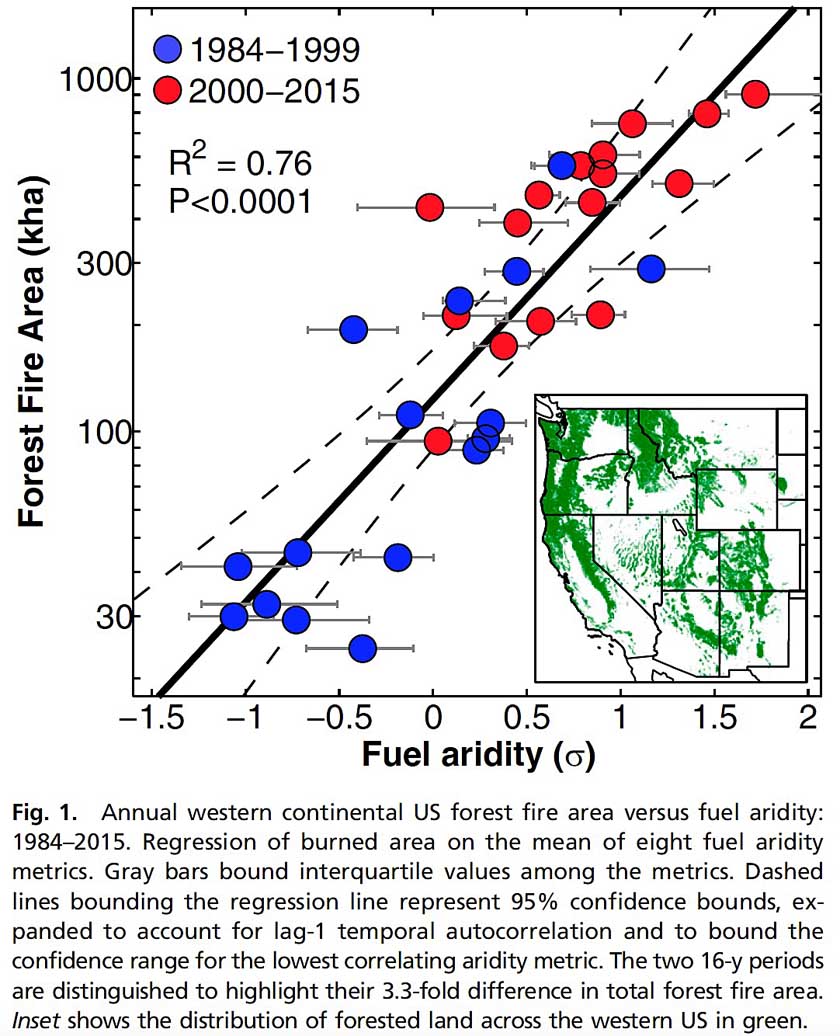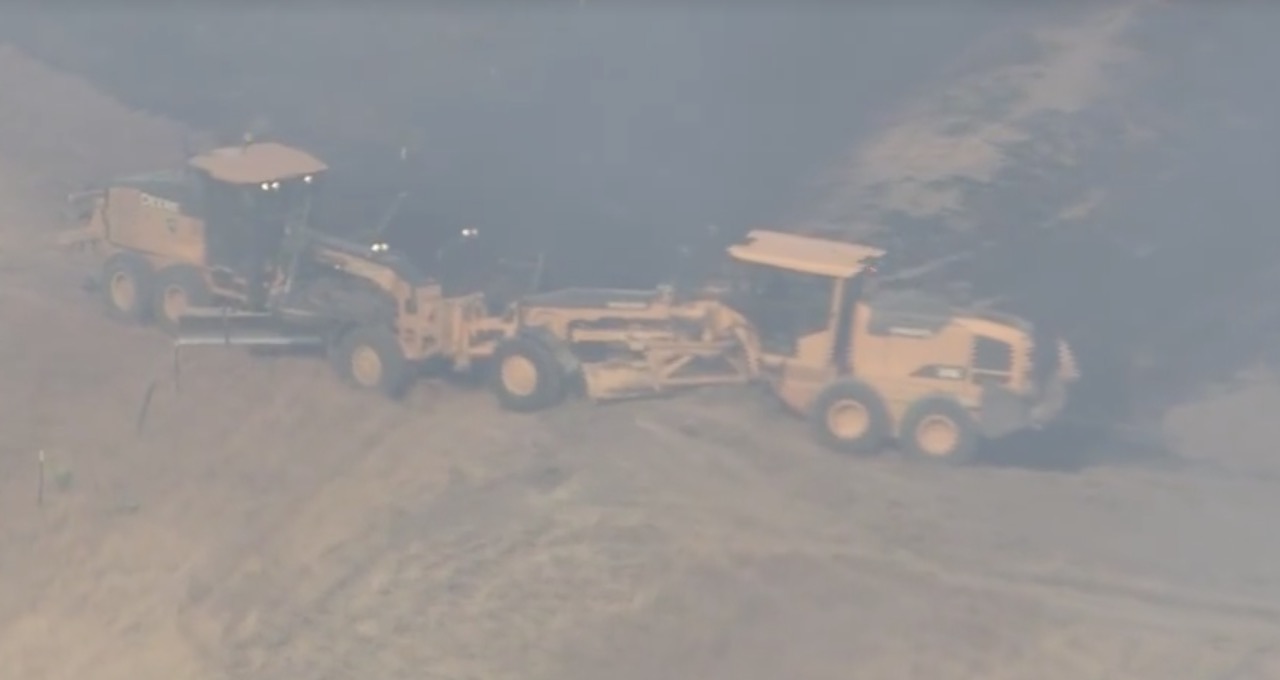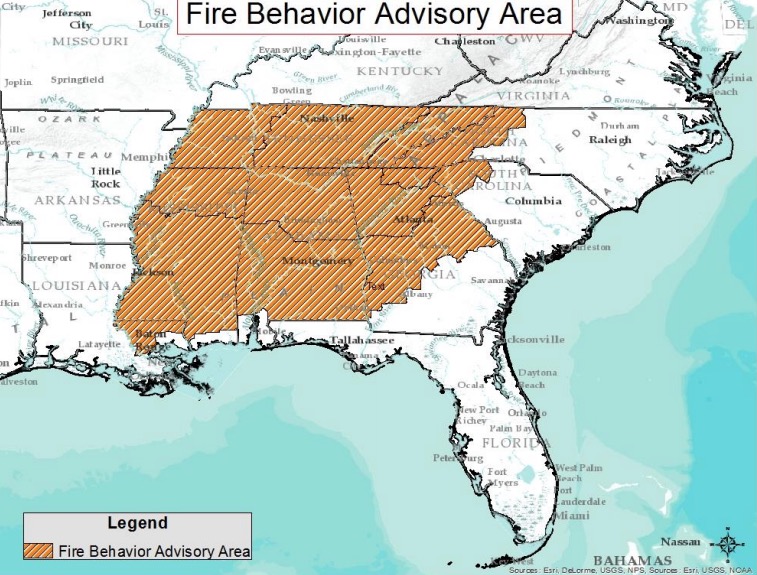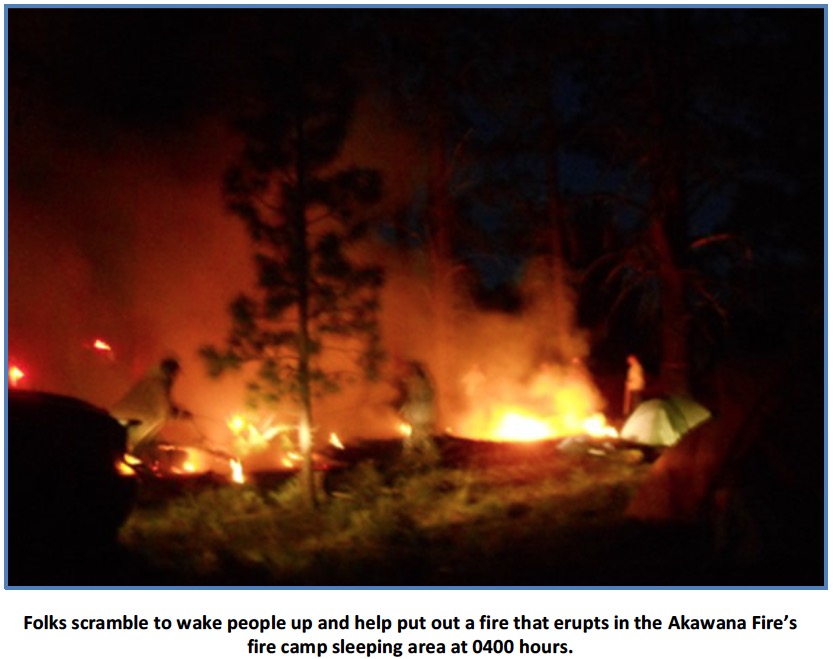Above: Acres burned in the United States, 1986 through 2015. Data from NIFC, compiled by Bill Gabbert.
A new study released yesterday concludes that human-caused climate change is responsible for nearly doubling the number of acres burned in western United States wildfires during the last 30 years.
Fires in western forests began increasing abruptly in the 1980s, as measured by area burned, the number of large fires, and length of the fire season. The increases have continued, and recently scientists and public officials have in part blamed human-influenced climate change. The new study is perhaps the first to quantify that assertion. “A lot of people are throwing around the words climate change and fire–specifically, last year fire chiefs and the governor of California started calling this the ‘new normal,’ ” said lead author John Abatzoglou, a professor of geography at the University of Idaho. “We wanted to put some numbers on it.”
Warm air can hold more moisture. As the temperature rises the relative humidity decreases. Low humidity withdraws more moisture out of live and dead plants as well as soil. Plants are the fuel for wildfires and lower moisture means fires can burn more rapidly and with increased intensity and resistance to control. Average temperatures in forested parts of the U.S. West have gone up about 2.5 degrees F since 1970, and are expected to keep rising. The resulting drying effect is evident in the rise of more fires.
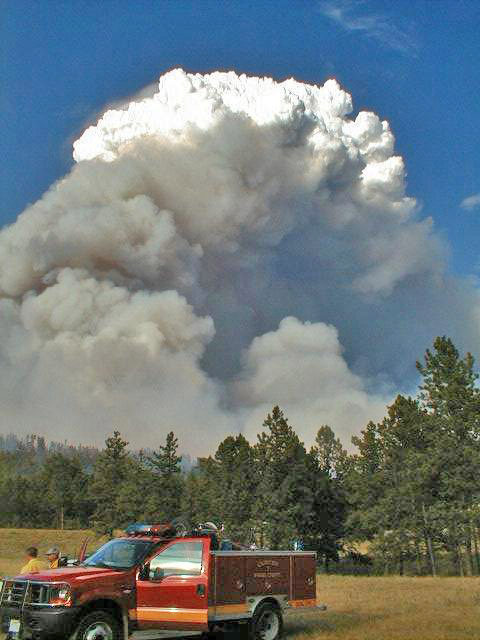
The overall increase in fire since the 1980s is about twice what the researchers attribute to climate change; the rest is due to other factors, they say. One has been a long-term natural climate oscillation over the Pacific Ocean that has steered storms away from the western United States. Another: firefighting itself. By constantly putting out fires, authorities have allowed areas they “saved” to build up more dry fuel, which later ignites, causing ever more catastrophic blazes, the researchers say. The costs of fire fighting have risen sharply in step; last year the federal government alone spent more than $2.1 billion. “We’re seeing the consequence of very successful fire suppression, except now it’s not that successful anymore,” said Abatzoglou.
The authors isolated the effects of climate warming from other factors by looking at eight different systems for rating forest aridity; these included the Palmer Drought Severity Index, the MacArthur Forest Fire Danger Index and the Canadian Forest Fire Danger Rating System. They then compared such measurements with observations of actual fires and large-scale climate models that estimate manmade warming. The crunched data showed that 55 percent of the increase in fuel aridity expected to lead to fires could be attributed to human-influenced climate change. Climate’s role in increasing such aridity has grown since 2000, the researchers say, and will continue to do so.
(The graphic below is from the study.)
The researchers found that anthropogenic climate change accounted for about 55% of observed increases in fuel aridity from 1979 to 2015 across western US forests, highlighting both anthropogenic climate change and natural climate variability as important contributors to increased wildfire potential in recent decades.
Mr. Abatzoglou and coauthor Park Williams, a bioclimatologist at Columbia University’s Lamont-Doherty Earth Observatory, say they do not account for some factors that could be offshoots of climate warming, and thus they may be understating the effect. These include millions of trees killed in recent years by beetles that prefer warmer weather, and declines in spring soil moisture brought on by earlier snowmelt. There is also evidence that lighting may increase with warming.
The study does not cover western grasslands. These have seen more fires too, but there is little evidence that climate plays a role there, said Mr. Abatzoglou; rather, the spread of highly flammable invasive grasses appears to be the main driver.
Mike Flannigan, a fire researcher at the University of Alberta, said that previous studies have tried to understand the effects of climate on fires in parts of Canada, but that nothing had been done for the United States on this scale. “What’s great about this paper is that it quantifies this effect, and it does it on a national scale,” he said.
Worldwide, wildfires of all kinds have been increasing, often with a suspected climate connection. Many see a huge fire that leveled part of the northern city of Fort McMurray, Alberta, this May as the result of a warming trend that is drying out northern forests. Fires have even been spreading beyond, into the tundra, in places where blazes have not been seen for thousands of years. That said, fires are not expected to increase everywhere. “Increased fire in a lot of places agrees with the projections,” said Jeremy Littell, a research ecologist with the U.S. Geological Survey in Anchorage, Alaska. “But in many woodlands, the relationship between climate and fire is not as tidy.”
Many scientists studying the issue believe the growth in U.S. western fires will continue for many years. Mr. Williams and others say that eventually, so many western forests will burn, they will become too fragmented for fires to spread easily, and the growth in fire will cease. But, he says, “there’s no hint we’re even getting close to that yet. I’d expect increases to proceed exponentially for at least the next few decades.” In the meantime, he said, “It means getting out of fire’s way. I’d definitely be worried about living in a forested area with only one road in and one road out.”


